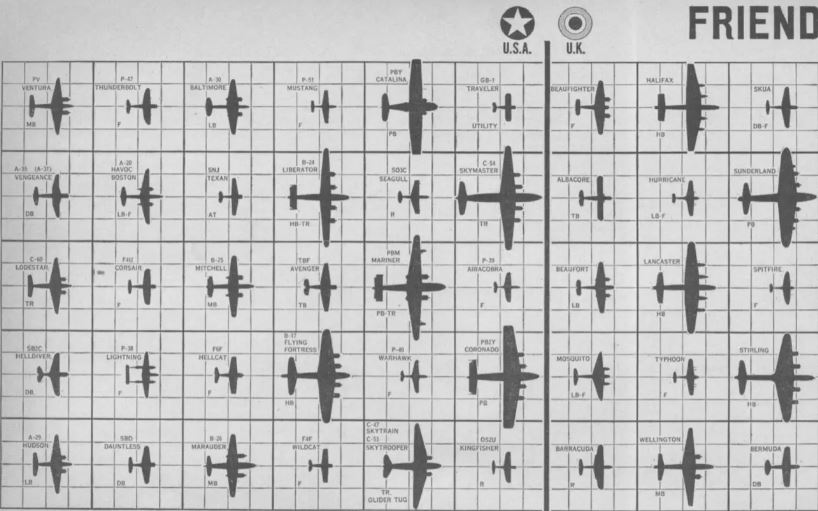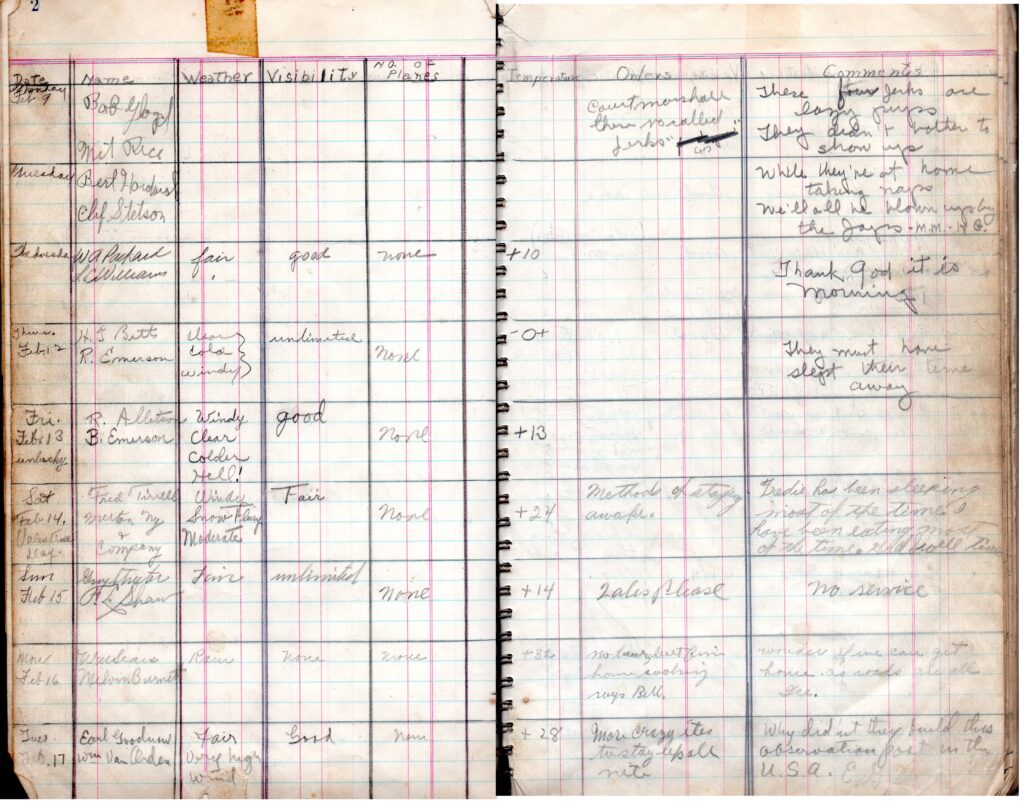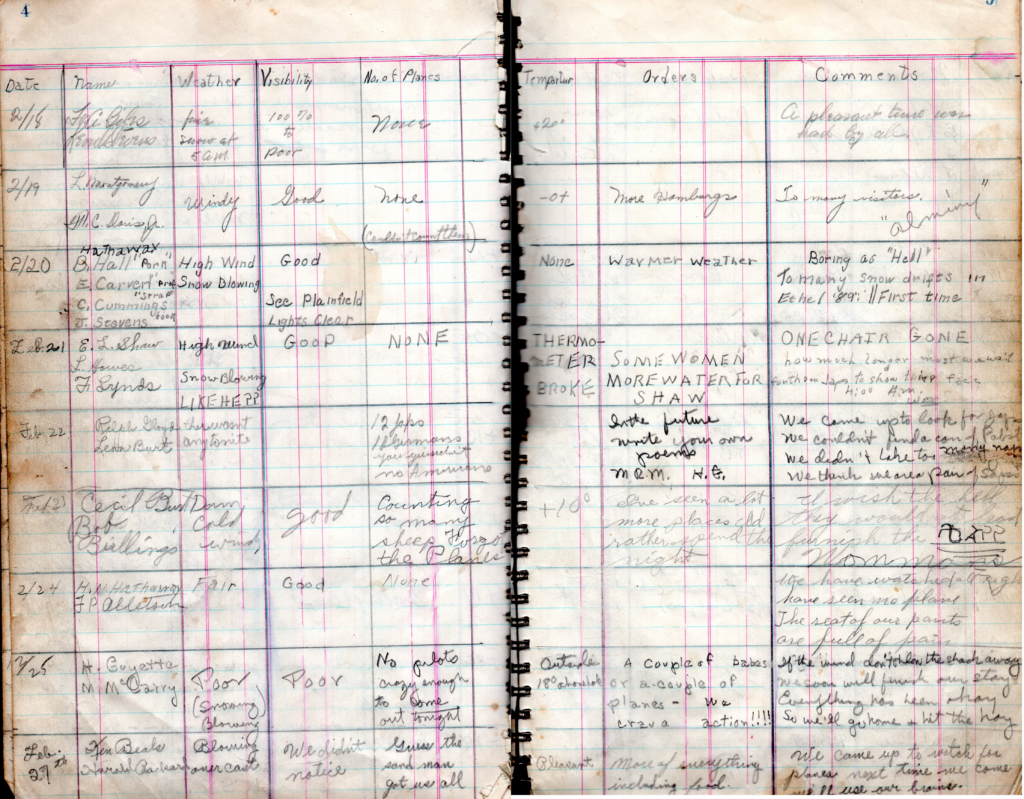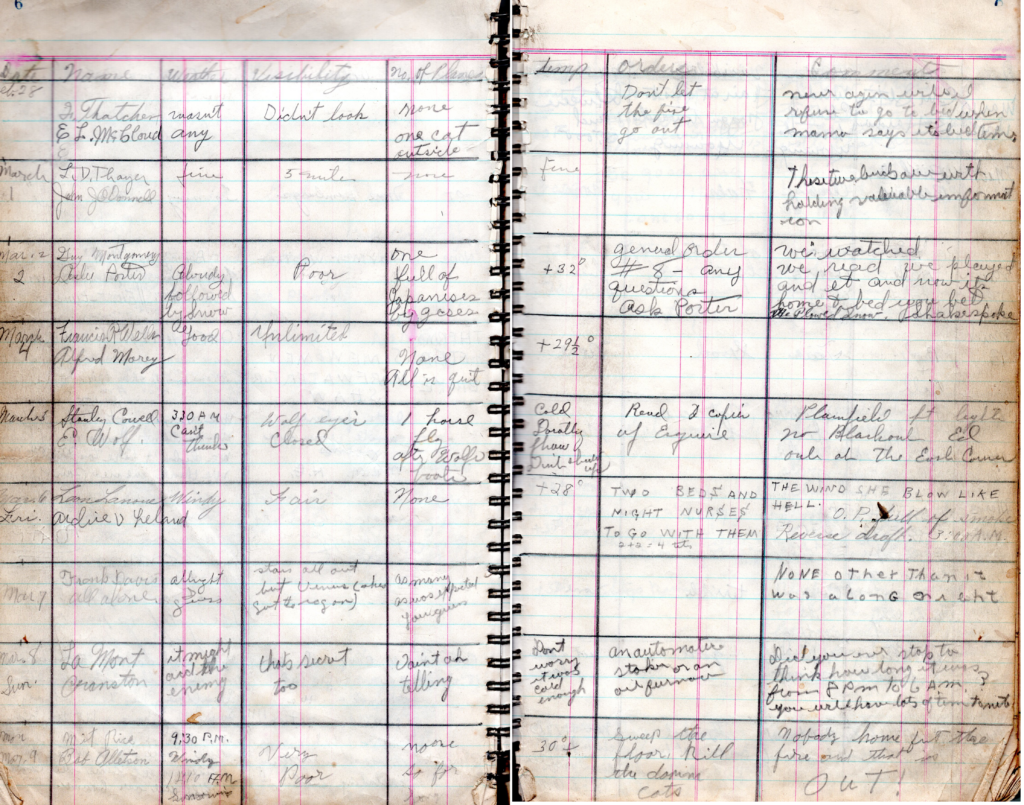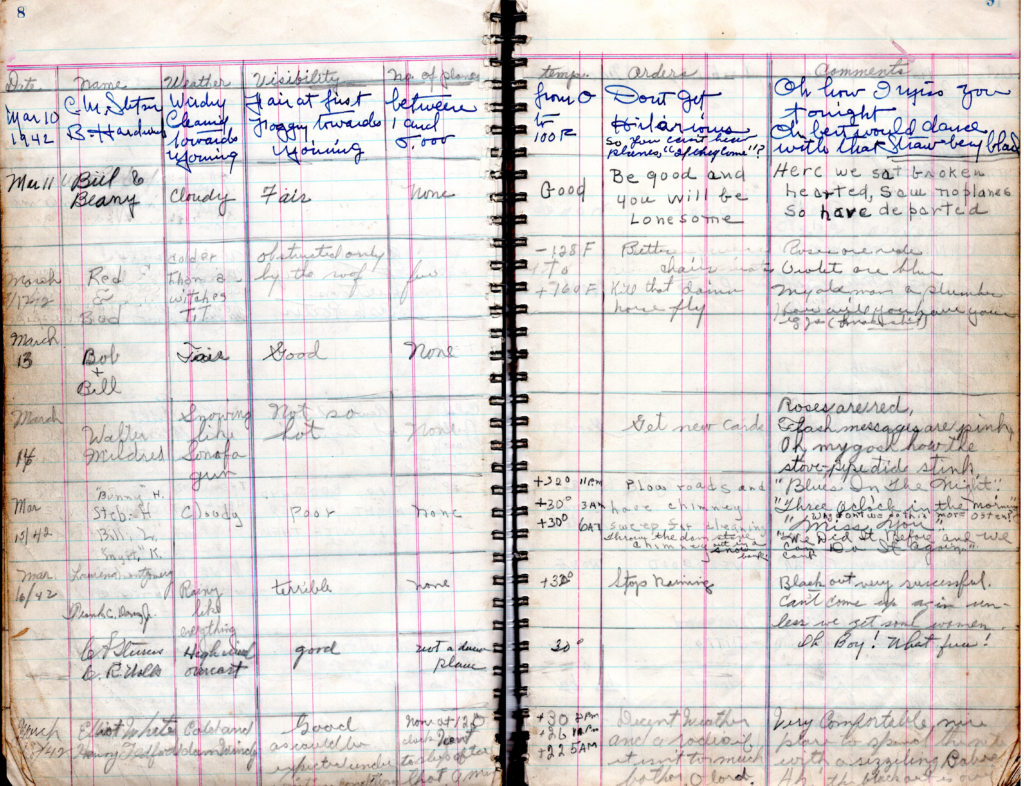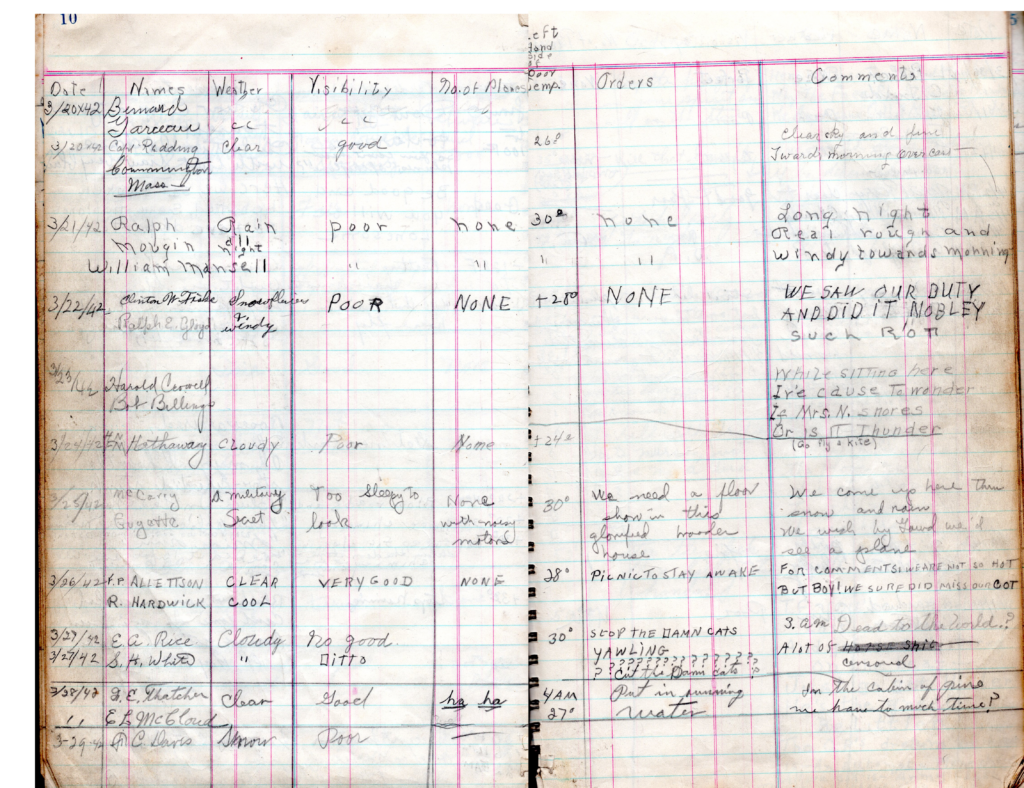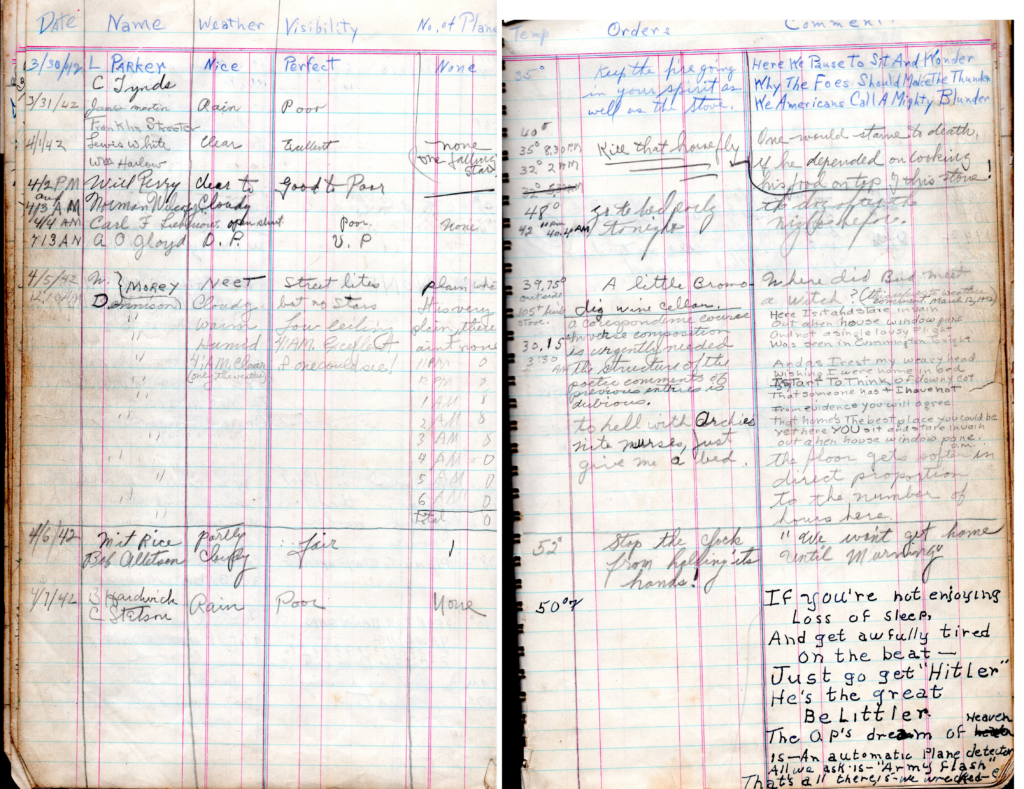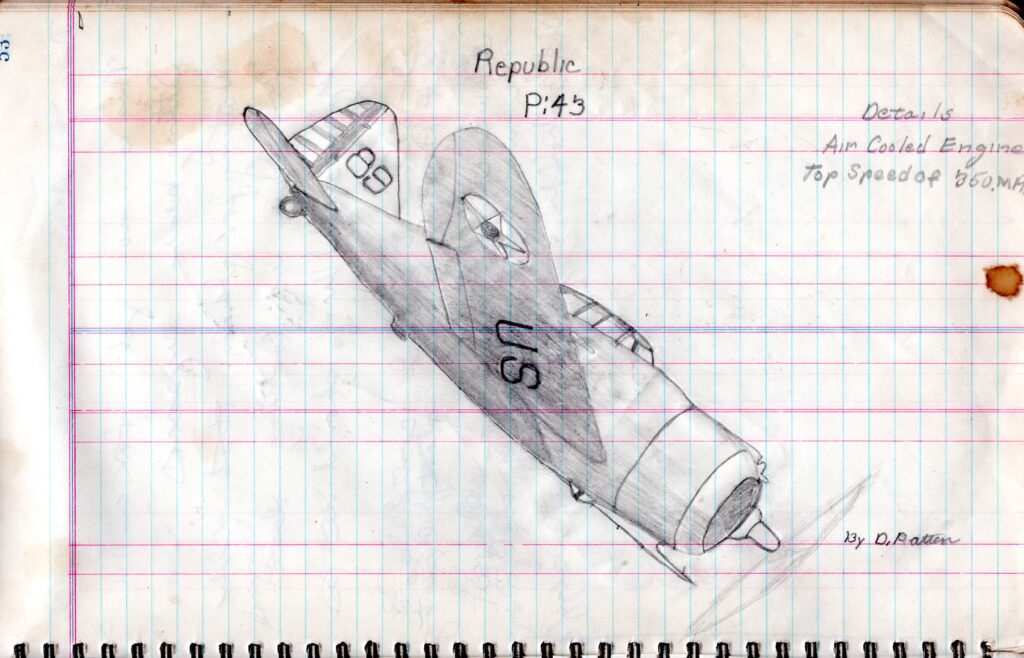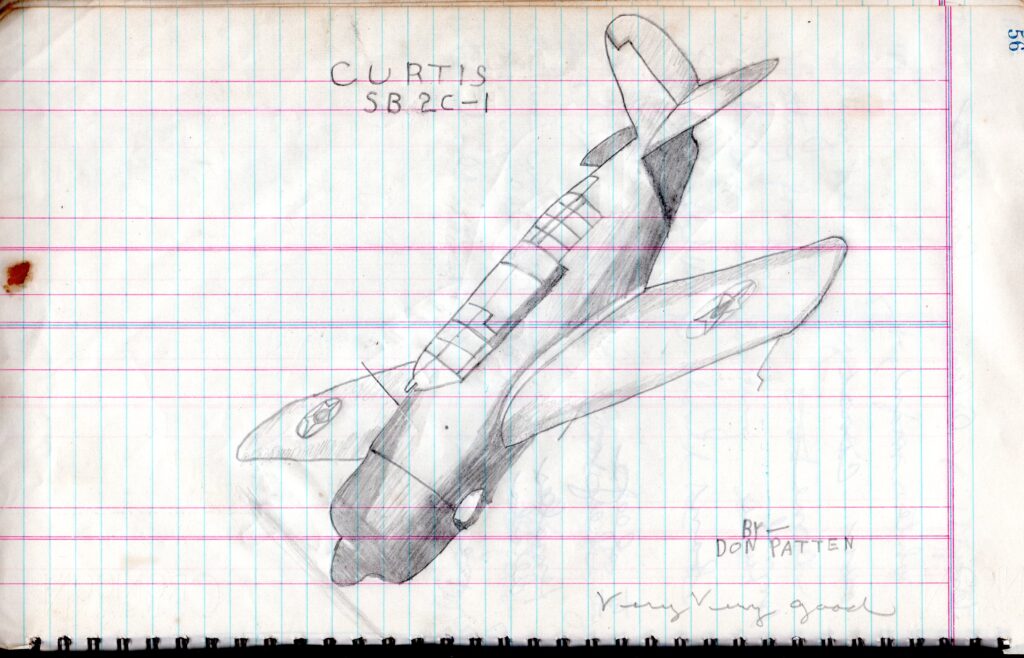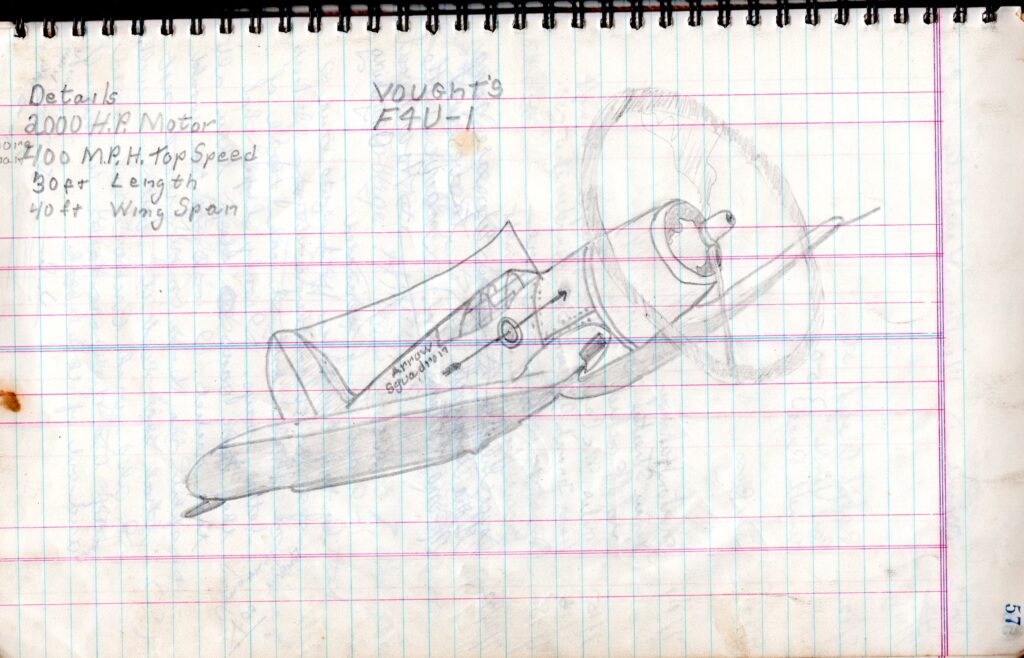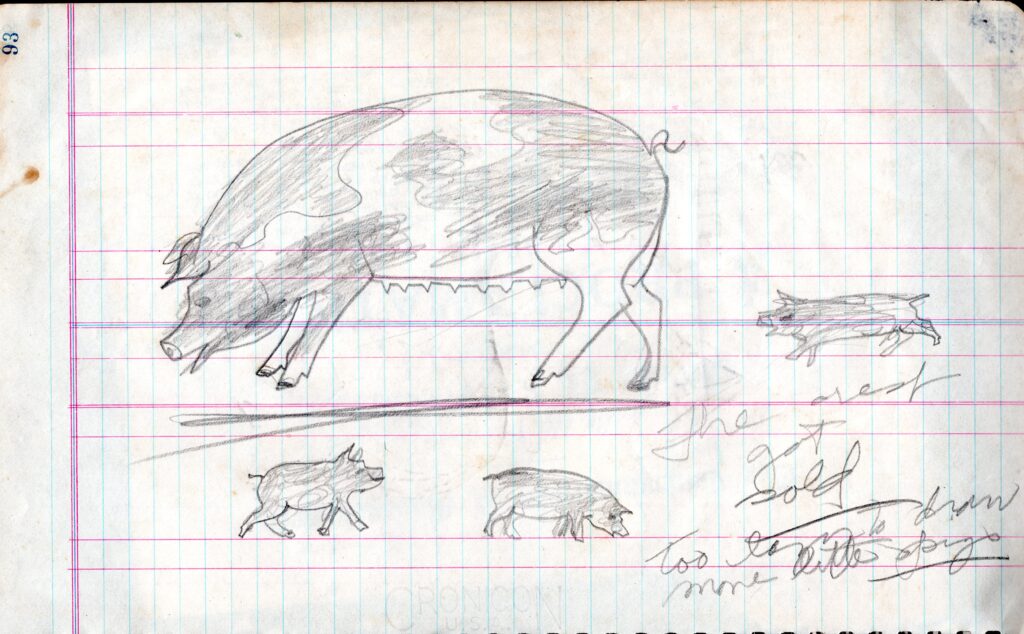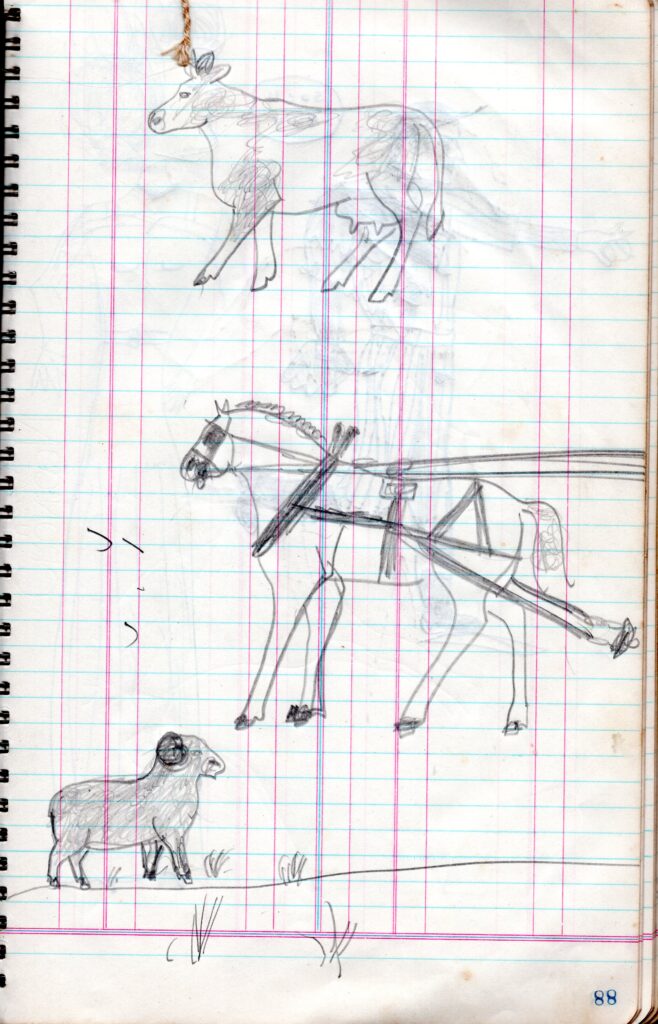Plainfield’s Civilian Aircraft Spotters: Keeping Their Eyes on the Skies

“Look! Up in the sky! It’s a bird! It’s a plane! It’s Superman!” Many of us are familiar with the preceding line from the Adventures of Superman (1952-1958). Well, members of the Plainfield Historical Society were reminded of this quote when we stumbled upon an interesting ledger that had been donated by a local resident. The ledger was kept by a group of Plainfield residents during World War II, mostly from the years 1942 -1943, as part of the civilian volunteer aircraft spotters, civilians who did their part in keeping the U.S. safe during wartime. As in other towns, cities and areas across the country, volunteer civilian airplane spotters were needed here to help defend the Nation from enemy attacks, reflecting the national hysteria following the infamous Pearl Harbor Attacks of December 7, 1941.
Apparently, there was a small cabin built on the Nye property on West Hill Road that was used by Plainfield members of the Aircraft Warning Service as a lookout for enemy planes. (Small being the operative word here as many of the entries in the ledger are humorous complaints on the size of the lookout shack.) While no planes were ever spotted here in Plainfield, the journal entries left behind are quite interesting and range from mundane reports to colorful poetry, prose and illustrations.
As always, one object in the Plainfield Historical Society’s collection set us off on an exploration of discovery, with ties to national and global events.
First, some general history on the Aircraft Warning Service and then a closer look at the entries in the ledger. We hope you find them as interesting and amusing as we did!
History of the Aircraft Warning Service
During World War I, the airplane was not generally used as a long-range fighting machine. However, during the period from 1919 to the start of World War II, the heavy bomber was created, capable of ranging far from its home base and carrying a lethal load of high explosives. It soon became clear that a warning system was needed to protect against this new threat. Technology at the outset of World War II consisted of mechanical sound detectors that were found to be inadequate to the job. It was also argued that while soldier lookouts would be valuable, their use would detract from other needed military operations.
The answer was found in calling on civilian volunteers to act as airplane spotters. With the help of the American Legion, volunteers were organized in May 1941 into the Aircraft Warning Service(AWS), the civilian arm of the Army’s Ground Observer Corps. On the east coast, the AWS was under the auspices of the Army Air Force’s 1st Interceptor Command based at Mitchel Field, New York. On the west coast, the AWS was under the auspices of the 4th Interceptor Command based in Riverside, California. On both coasts, observation posts, information centers and filter centers were established. The United States entered World War II on Dec 7, 1941. Many of those who could not join the military for whatever reason were recruited to the AWS. Statistically, this led to a preponderance of women, apparent in the surviving material, but seemingly little recognized.

Almost one million men and women–volunteer “soldiers out of uniform”–served in the AWS. Some were ground observers scanning the skies for enemy aircraft; others worked in the information and filter centers as part of the Aircraft Warning Corps, the second component of the AWS. Almost 750,000 of these volunteers served under the First Fighter Command whose jurisdiction stretched from Canada to Key West, Florida.
Since it wasn’t practical to use military personnel as ground observers, the logical solution was to call on civilians to watch the skies. Newspaper ads, radio programs, and other means were used to recruit the tens of thousands of volunteers needed to join the Ground Observer Corps and man the observation posts. From all walks of life, all ages, all professions, the volunteers of the GOC were united in a common goal–to protect the United States.
Over 14,000 observation posts were manned in two-hour shifts around the clock. Some were only shacks, hen houses, or junked automobiles while others were more elaborate shelters. Delaware was one of the first states to have ground observers organized and serving at observation posts.

While the ground observers were the eyes of the AWS, the nerve center was the Aircraft Warning Corps. The AWC was made up of information and filter centers based in secret locations. These centers, also manned by volunteers, received reports from the observation posts and plotted and tracked aircraft aerial activity. Modeled after the successful British system, each filter center controlled about 20 observation posts.

Aircraft spotters learned to identify all types of aircraft through intensive training classes and training aids such as aircraft spotter cards, guides, and silhouette models. Buttons and armbands identified ground observers, and special pins and medals were awarded to those with the highest number of volunteer hours. The Aircraft Warning Volunteer magazine devoted to the activities and interests of the GOC and AWC contained news articles, photos, and aircraft recognition tests.
When the focus of the war moved from a defensive position at home to an offensive position in Europe and Asia, the risk of attack on the home front was reduced. In May 1944 the War Department ordered the inactivation of the Ground Observer Corps and the Aircraft Warning Corps. – Air Mobility Command Museum
Observation Post Ledger Entries
Below is a gallery of some of the pages from the AWS ledger from Plainfield. See if you recognize any of the people who served their country right here in Town. Just click on each image to enlarge but you will have to click on the back arrow to return to this page. One needs to remember that many of the AWS members were either too old or too young to serve in the military, and there are a few entries by Plainfield ladies, which was quite common across the country.
Below are examples of the witty and sometimes risqué writing and illustrations that these civil servants created to help pass the time.
To learn more about the AWS and civil defense, click on the links below.
Our WWII Story: Civil defense in a time of war: The American Legion MAY 27, 2020
When Farmers Were Spotters: Farming the Homefront During World War II

